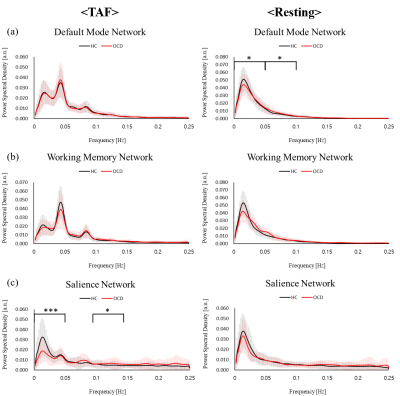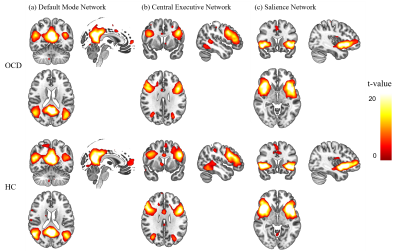Eunji Kim1, Sang Won Lee2, Hyunsil Cha1, Heajung Choi1, Seungho Kim1, Yunheung Kim3, Seung Jae Lee2, and Yongmin Chang4
1Medical & Biological Engineering, Kyungpook National University, Daegu, Korea, Republic of, 2Psychiatry, Kyungpook National University Hospital, Daegu, Korea, Republic of, 3Kyungpook National University, Daegu, Korea, Republic of, 4Radiology and Molecular Medicine, Kyungpook National University, Daegu, Korea, Republic of
1Medical & Biological Engineering, Kyungpook National University, Daegu, Korea, Republic of, 2Psychiatry, Kyungpook National University Hospital, Daegu, Korea, Republic of, 3Kyungpook National University, Daegu, Korea, Republic of, 4Radiology and Molecular Medicine, Kyungpook National University, Daegu, Korea, Republic of
OCD
demonstrated the alterations of PSD which reflects neural activity in TAF task and resting-state.
These PSDs are correlated to psychological measures. Therefore,
alterations of PSD in SN during TAF task seem to be associated with OCD
symptoms.

Power spectra under TAF task and resting state of OCD (red) and HC
(black). During resting state, intrinsic neural activity power within DMN had
significant difference at Bin1 and Bin2. Salience network showed significant
difference at Bin1 and Bin3 during TAF task. (Bin1: 0-0.05 Hz, Bin2: 0.05-0.1
Hz, Bin3: 0.1-0.15 Hz, Bin4: 0.15-0.2 Hz, Bin5: 0.2-0.25Hz)

